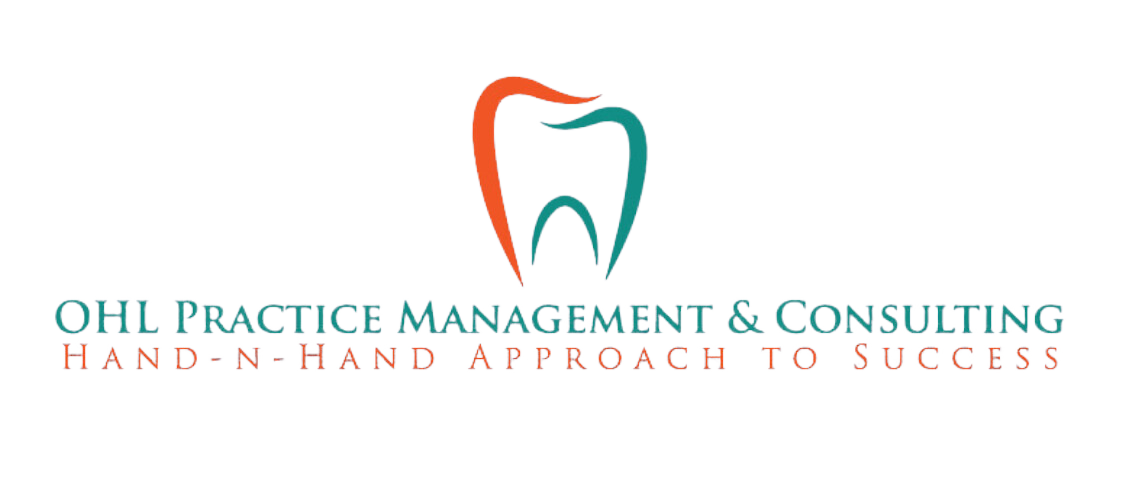To effectively manage obstructive sleep apnea (OSA), dentistry and sleep medicine must work together cohesively. This collaboration ensures that patients receive comprehensive care that addresses OSA from multiple angles.
Firstly, dentists bring a unique perspective to OSA detection. Their expertise in oral health allows them to notice symptoms such as unusual teeth wear, which might indicate a patient’s struggle with OSA. For example, a dentist may observe that a patient’s tooth enamel is excessively worn down, a sign that can correlate with the teeth grinding often seen in OSA sufferers.
Secondly, sleep physicians contribute their expertise in diagnosing and treating sleep disorders. After a dentist brings potential OSA to light, a sleep doctor can perform a sleep study to confirm the diagnosis. They can then prescribe treatments such as CPAP therapy or, in collaboration with the dentist, supervise the fitting of a custom oral appliance.
Finally, the team approach aids in the patient’s ongoing OSA management. A dentist, for instance, can monitor how the oral appliance affects the patient’s oral health over time and make adjustments if necessary while the sleep physician may adjust the treatment plan based on the patient’s sleep data and comfort with the therapy.
Introduction
Effective OSA management requires collaborative efforts from both dentistry and sleep medicine. The overlap in responsibility between these fields enriches patient care with multidisciplinary insights and treatments, especially in the realm of oral appliance therapy.
Dental professionals are instrumental in flagging early signs of OSA due to their frequent examinations of the mouth and throat. For instance, a dentist may detect enlarged tonsils, a common OSA indicator, and refer the patient to a sleep specialist. Such cross-discipline vigilance is key in the fight against undiagnosed OSA.
Sleep specialists take the baton by providing in-depth analysis and treatment options once a dental professional identifies potential OSA. Their ability to perform sleep studies and interpret results is crucial to confirm an OSA diagnosis. With this partnership, the patient receives a comprehensive evaluation and a tailored treatment plan, enhancing their chances of successful management of the condition.
Ultimately, the integration of oral appliance therapy into OSA treatment exemplifies the strengths of a team approach. When a dentist prescribes a custom-fit oral appliance, the follow-up with sleep specialists ensures that the therapy is well-coordinated with other treatments, like CPAP, enhancing overall efficacy and improving patient adherence and comfort.
Key Challenge or Risk Area 1
Addressing OSA promptly is crucial, yet it’s often unrecognized until later stages, underscoring the importance of early diagnosis. Dentistry is well-positioned to intercept OSA during routine evaluations before the condition escalates, thereby mitigating associated health threats.
Initial detection is the first barrier. Dentists routinely examine areas affected by OSA, such as the soft palate and throat, which can reveal telltale signs like inflamed tissues or a small airway. When a patient comes in for a check-up, the dentist’s thorough inspection can uncover early symptoms that might otherwise go unnoticed.
After recognizing signs of OSA, immediate referral is a critical next step. Upon observing symptoms, a dentist must quickly connect the patient with a sleep specialist. This prompt action can lead to a swift diagnosis and intervention, bypassing the progression of OSA and its negative health effects, such as hypertension or heart disease.
Last, early treatment can prevent complications. With regular dental visits acting as screening points, interventions can be introduced at a stage when simple lifestyle changes might suffice to improve the patient’s condition, possibly delaying or eliminating the need for more invasive treatments like surgery or lifelong CPAP use.
Key Challenge or Risk Area 2
Overcoming skepticism surrounding oral appliance therapy (OAT) is essential for its wider adoption in treating OSA. Dentists must not only grasp but also convey the value of OAT, positioning it as a legitimate substitute for CPAP therapy when appropriate.
Dentists’ advocacy plays a pivotal role here. They should communicate OAT’s advantages, such as its non-invasiveness and convenience, which often lead to better patient compliance compared to CPAP machines. Illustrating success stories where OAT has significantly improved patients’ sleep patterns can help in realigning perceptions.
Education extends beyond the patient to include the medical community. Dental practitioners must engage in dialogues with sleep medicine colleagues and primary care providers, explaining the clinical evidence supporting OAT’s efficiency. Workshops or joint seminars might be effective platforms for such exchanges.
Lastly, dispelling myths is a continuous process. Myths around OAT’s effectiveness can be addressed by providing up-to-date research and testimonials, reassessing OAT’s role in managing OSA, and offering reassurance about its benefits and efficacy. Ongoing professional collaboration can reinforce the position of OAT as an important tool in the OSA treatment arsenal.
Key Challenge or Risk Area 3
Synchronization between dentistry and sleep medicine is necessary to provide well-rounded care for OSA patients, yet it is hindered by disparities in treatment protocols and mutual understanding. Developing a joint framework for care and education initiatives can bridge these gaps.
First of all, alignment of care protocols is essential. An integrated approach to OSA management requires that dentists and sleep doctors use compatible treatment guidelines. For instance, where a dentist might focus on fitting an oral appliance, a sleep doctor would need to monitor its effectiveness in the patient’s sleep quality, requiring mutual protocols for follow-ups and adjustments.
Second, cultivating mutual understanding through joint educational initiatives can enhance collaboration. By attending shared seminars and interdisciplinary conferences, professionals on both sides can stay informed about each other’s methodologies, learning to anticipate and complement each other’s treatment approaches.
Lastly, patient care benefits most when communication channels between disciplines are clear and open. Tools such as shared electronic health records can keep all treating professionals updated on the patient’s progress, resulting in more informed decisions and a unified care strategy. In doing so, they ensure that the standards for patient treatment remain consistent across both fields.
Actionable Response or Strategic Solution
To optimize the care of OSA patients, a unified treatment model that fosters partnerships between dentists and sleep experts is crucial. This cooperative model should revolve around shared knowledge, seamless communication, and joint patient management strategies.
Dentists and sleep specialists forming partnerships is the cornerstone of integrated care. By working together, dental professionals can broaden their understanding of sleep medicine, while sleep experts can gain insights into the dental aspects of OSA treatment. An example of this would be cross-referencing cases to ensure that oral appliances are both effective in managing OSA symptoms and fit comfortably, addressing oral health needs.
Shared patient records play an essential role in collaborative care. When dental and sleep medicine records are accessible to both parties—subject to patient consent—each professional can have a full picture of the patient’s health status and treatment progress. This could include sleep study results for sleep physicians and dental appliance adjustments for dentists, fostering an informed approach to treatment choices.
Finally, utilizing common communication tools ensures efficient collaboration. Whether it’s a shared electronic health system or regular interdisciplinary case meetings, these platforms facilitate discussions about patient care, synchronize treatment plans, and ultimately lead to improved health outcomes for OSA patients.

Decision Criteria or Escalation Triggers
Setting clear guidelines for when to escalate OSA concerns to a sleep specialist is pivotal for the swift management of the disorder. These guidelines depend on observed dental signs, seamless collaboration between disciplines, and a comprehensive care strategy that guides patients fluidly from diagnosis to treatment.
Dental signs prompting further evaluation mark the start of this process. When a dentist notices indicators such as persistent morning headaches or significant tooth grinding, it signals the need for a sleep specialist’s expertise. These signs are critical triggers because they can pinpoint individuals who might otherwise not realize they suffer from OSA. Directing these patients to the right specialist can lead to early intervention and better health outcomes.
Collaboration between dentists and sleep specialists is vital for managing OSA effectively. When both parties share knowledge and treatment response, it creates a cohesive care strategy. For example, if a patient doesn’t tolerate a CPAP machine well, the dentist can offer insights into oral appliance alternatives, which the sleep specialist can then integrate into the patient’s overall treatment plan.
A unified patient care journey ensures that every OSA patient receives thorough, uninterrupted attention. Coordinated patient handoffs between dental and sleep medicine professionals, structured follow-up routines, and shared treatment objectives lead to holistic care that encompasses both dental health and overall wellbeing.
Support Resources or Professional Guidance
Dentists have access to a variety of resources and professional guidance to enhance their capabilities in managing OSA, which is crucial to aligning treatment strategies across the profession. These resources span from educational programs to clinical guidelines that standardize oral appliance therapy.
Educational opportunities provide a foundation for dentists to understand and treat OSA more effectively. Dental professionals can participate in seminars and workshops led by organizations like the American Academy of Dental Sleep Medicine. These courses cover topics ranging from the basics of sleep disorders to the nuances of fitting an oral appliance correctly.
Clinical guidelines help ensure that dentists employ a consistent and effective approach to OSA management. By adhering to the evidence-based practices established by sleep medicine authorities, dentists can confidently apply oral appliance therapy, knowing they are in line with the latest recommendations and standards of the field.
Shared knowledge bases between dental professionals foster a uniform standard of care. By tapping into a collective pool of experience and research, dentists can stay current on the best practices, case studies, and patient outcomes, thereby refining the quality and effectiveness of their OSA interventions.
Preventive Measures or Best Practices
Dentists can significantly impact the early identification and treatment of OSA through preventive measures and adherence to best practices. These range from proactive screening in dental offices to engaging in public education about the role of dental health in managing the disorder.
Screening for OSA risk factors is the frontline defense in dental practices. Dentists should incorporate questions about sleep patterns and snoring into routine assessments, alongside examinations of the oral cavity for signs like a recessed chin or a large tongue, which may increase OSA risks. Addressing these factors early can lead to timely referrals and early intervention, circumventing the escalation of OSA symptoms and its associated health concerns.
Public education initiatives provide an opportunity for dental offices to highlight the importance of dental health in OSA management. By holding informative sessions, creating pamphlets, or even through social media engagement, dental professionals can raise awareness about the signs of OSA and the effectiveness of treatments like oral appliance therapy, encouraging the community to seek assistance sooner.
Active involvement in community health promotion fosters a better understanding of OSA and underscores the dental practitioner’s role in managing this sleep disorder. These concerted efforts contribute to a collective awareness and endorse the importance of maintaining oral health as part of overall well-being.
Conclusion
The convergence of dental and sleep medicine epitomizes the forward-thinking approach of Ohl Practice Management & Consulting to OSA treatment. By uniting these disciplines, we can enhance the quality of patient care and set a precedent for comprehensive OSA management.
The beneficial implications for patient outcomes are profound when care is coordinated. For instance, when a patient’s OSA is managed collaboratively, not only are their symptoms alleviated, but the underlying conditions affecting their sleep and overall health are also systematically addressed. This approach aligns treatment strategies for more effective and lasting results.
Paving the way forward, this holistic approach could very well define the future standard for managing not only OSA but potentially other intertwined health issues as well. As such, Ohl Practice Management & Consulting remains committed to fostering and leading this integrated model of care, recognizing the significant role it plays in advancing both the scope of dental practice and the field of sleep medicine.
In conclusion, it is the synthesis of expertise from both dental and sleep professionals that ultimately forges a path to a more holistic and patient-centric model of care — a path that Ohl Practice Management & Consulting is dedicated to championing in the realm of OSA treatment and beyond.
Don’t let uncertainty hold you back. Schedule a consultation today and start building a thriving dental sleep practice with Ohl Consulting!
Ohl Practice Management & Consulting
connect@ohlpracticeconsulting.com
FAQ
How does dentistry play a role in treating sleep apnea?
Dentists can spot early signs of obstructive sleep apnea (OSA) during regular check-ups, such as teeth grinding or jaw issues. They work closely with sleep specialists to provide treatments like oral appliance therapy, complementing traditional sleep medicine approaches.
Is oral appliance therapy as effective as CPAP for OSA?
Oral appliance therapy, tailored and monitored by dental professionals, can be a highly effective treatment for OSA, especially for those who find CPAP machines uncomfortable or cumbersome. Continuous cooperation with sleep specialists ensures tailored treatment for individual needs.
What can I expect during collaborative OSA treatment?
Expect a thorough examination from both a dentist and a sleep physician, with treatments that may include an oral appliance customized to fit your mouth comfortably. Regular follow-ups with both professionals will ensure your treatment is optimized for the best sleep results.





